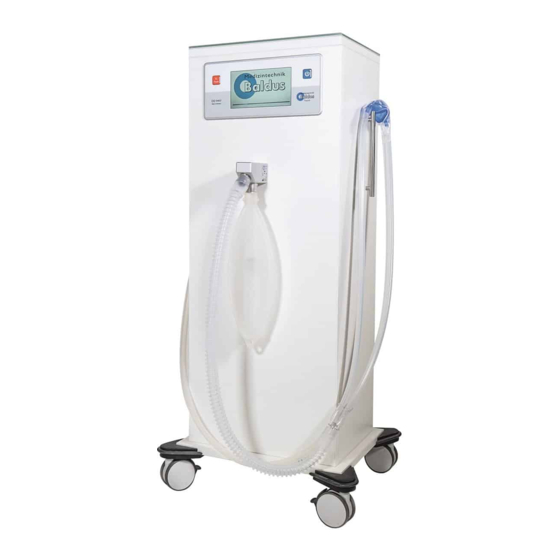
Summarization of Contents
1. Important Information and Intended Use
Intended Use and Key Operational Guidelines
Details the specific uses of medical nitrous oxide for patient sedation and relaxation, including crucial operational warnings.
2. Indications, Contraindications and Side Effects
Patient Suitability and Potential Effects
Lists patient suitability, contraindications, and potential side effects like cardiovascular, respiratory, and psychomotor impacts.
3. Nitrous Oxide System Components and Technical Information
Mixer, Controls, and Menus
Explains the oxygen-nitrous oxide mixer, front panel controls, and main/sedation menu operations.
Bag T Accessory and System Views
Describes the features of the Bag T accessory and illustrates unit views.
System Configuration and Data Management
Shows unit configuration, USB port for data saving, and the complete system setup.
Technical Data and Product Variants
Details technical specifications, product variants, and electrical data for the device.
4. Scope of Delivery and Accessories
Essential and Optional Accessories
Lists essential safety accessories, optional items, and single-use inner masks.
5. Assembly Instructions
Gas Cylinder and Pressure Reducer Setup
Guidelines for managing gas cylinders and connecting pressure reducers to them.
Mixer Connection and Unit Installation
Details connecting the mixer to reducers and installing the main unit.
Bag T Assembly and Connection
Instructions for assembling and connecting the Baldus Bag T accessory.
6. Safety and Regular Controls
General Safety and Unit Features
Emphasizes general safety, specific unit safety features, and precautions.
System Signals, Errors, and Flow Limits
Explains information signals, error codes, flow limits, and flush button functions.
Routine Checks and Maintenance Schedule
Outlines mandatory routine checks, annual servicing, and maintenance procedures.
Monthly Checks, Venting, and Air Contamination
Details monthly checks, system venting, and ambient air contamination limits.
Preventing Leaks and Managing Over-Sedation
Provides countermeasures for leaks, over-sedation, and other operational issues.
7. Handling and Hygiene
Cylinder Pressure, Patient Monitoring, and Hygiene
Guidance on cylinder pressure, patient monitoring, sedation adjustment, and hygiene measures.
8. Effective Troubleshooting
Troubleshooting Gas and Sedation Issues
Addresses common problems like gas supply issues, patient sedation, and bag functionality.
9. Frequently Asked Questions
Q&A on Handling, Safety, and Sedation
Answers common questions regarding handling, safety, gas usage, and patient sedation.
10. Declaration of Conformity
Manufacturer, Device, and Compliance Details
Identifies manufacturer, device, notified body, and conformity assessment procedures.


Need help?
Do you have a question about the Touch 70 and is the answer not in the manual?
Questions and answers